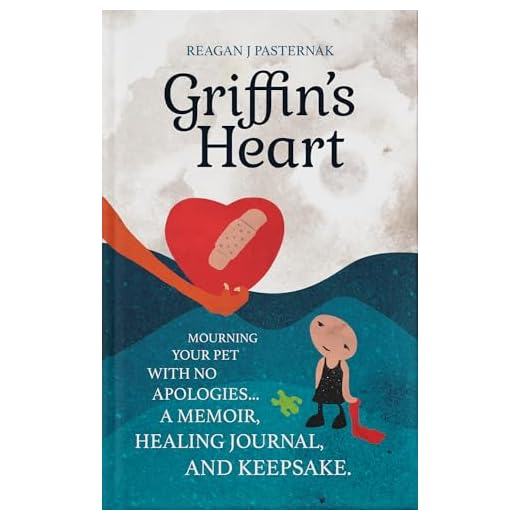








It’s crucial to know that many veterinary practices prioritise the comfort of pets during their final moments. The administration of medications is designed to minimise discomfort and ensure a gentle transition. By choosing a compassionate vet, you can find reassurance in knowing that the process is handled with care and empathy.
In my experience, being present can make a significant difference. Holding your beloved companion can provide a sense of security for both of you. Creating a calm environment, perhaps with soft music or familiar scents, can enhance this moment, making it a peaceful farewell.
It’s also beneficial to discuss any concerns with your veterinarian beforehand. They can explain the procedures in detail, which can help alleviate anxiety. Knowing what to expect can transform a daunting experience into a serene goodbye, filled with love and gratitude for the time shared together.
Understanding the Transition for Pets
It’s crucial to know that the process of transitioning a pet can be gentle and compassionate. Many veterinarians use sedatives to ensure comfort before administering any final medication. This approach helps reduce anxiety, making the experience less stressful.
Signs of Comfort in the Process
Observing your furry companion during this time can provide insights into their state. Look for signs of relaxation, such as:
- Calm breathing patterns
- Softening of facial features
- Leaning into gentle touches
- Closing eyes peacefully
Creating a Peaceful Environment
Setting the stage for a serene farewell is essential. Consider the following:
- Choose a familiar space where your pet feels safe.
- Surround them with comforting items, such as their favourite blanket or toy.
- Play soft music or use soothing sounds to create a calming atmosphere.
Additionally, if you’re interested in eco-friendly products, check out the best vegan laundry detergents to keep your pet’s environment clean and safe.
Every pet owner has a unique story, and ensuring a smooth transition for your beloved companion is a part of that journey. The focus should always be on comfort and peace, prioritising their needs during this difficult time.
Understanding the Euthanasia Process for Dogs
Preparation is key. Prior to scheduling the procedure, consult with a veterinarian to discuss your pet’s condition and the options available. Knowing what to expect can alleviate anxiety for both you and your furry companion.
Medical Evaluation
A thorough examination by a vet will determine the appropriate approach. This may include assessing health status and discussing potential medications that can provide comfort before the final act. Using sedatives is common, ensuring the experience is as serene as possible.
The Procedure
The actual procedure typically involves an injection of an overdose of anaesthetic. This ensures a swift and peaceful transition. Many pet owners choose to be present, offering comfort and love during the process. It’s crucial to create a calm environment, perhaps bringing along a favourite blanket or toy. Afterward, discussing options for memorialising your pet can be a meaningful step in the healing process.
It’s a deeply personal decision, and ensuring you have all the information can help make it more bearable. Finding a compassionate veterinarian who understands your needs can make all the difference. Take your time to reflect on your options, and trust your instincts regarding your beloved companion’s well-being.
Common Myths About Discomfort During Euthanasia
One prevalent myth is that a tranquilising injection causes suffering. In reality, the procedure is designed to be as gentle as possible. Most veterinarians administer a sedative beforehand, allowing for a calm and serene state prior to the final step.
Another misconception is the idea that animals are aware of what is happening. Studies indicate that many pets do not comprehend the situation, especially when they are in a familiar environment. This familiarity helps soothe anxiety and creates a peaceful atmosphere.
People often believe that the injection is painful. However, the medication used is typically not only effective but also causes minimal discomfort. The aim is to ensure a smooth transition without distress.
Some think that pets may experience fear during the process. In reality, the environment and the presence of trusted individuals can significantly reduce any signs of anxiety. A calm setting with familiar voices can provide immense comfort.
There’s a notion that euthanasia is only for severe health issues. However, the decision is personal and can involve various factors, including quality of life and suffering. Many choose this route to prevent prolonged discomfort, viewing it as an act of compassion.
Finally, a common belief is that this option should be avoided at all costs. In truth, it can be a compassionate choice, prioritising the well-being of a beloved companion. Understanding these myths can help pet owners make informed decisions that honour their furry friends.
Signs of Discomfort in Canines: What to Look For
Observe changes in behaviour; these can be indicators of distress. A normally friendly companion may become withdrawn or aggressive. Look for signs such as excessive whining, growling, or snapping, which may suggest that something is amiss.
Physical Symptoms
Watch for physical signs like limping, reluctance to move, or favouring a specific limb. An altered posture, such as hunching or tensing, can also indicate discomfort. If your furry friend is licking, biting, or scratching a particular area incessantly, this might be a signal of underlying issues.
Changes in Routine
Notice any alterations in eating or drinking habits. A sudden loss of appetite or avoidance of favourite activities can be a telltale sign of distress. Additionally, increased panting or drooling, especially when not engaged in physical activity, should raise concerns. Regular monitoring of these behaviours will help you identify potential problems early.
Types of Sedatives Used Before Euthanasia
Prior to administering the final procedure, various sedatives are employed to ensure comfort and calmness. Commonly used medications include acepromazine, which is a tranquiliser that helps to alleviate anxiety, and can be administered either intravenously or intramuscularly. It typically takes effect within 15 to 30 minutes, allowing the animal to relax before proceeding.
Other Medications
Another option is diazepam, known for its muscle-relaxing properties. This medication not only calms but also helps mitigate any potential discomfort. In some cases, veterinarians may opt for a combination of sedatives to tailor the experience to the individual needs of the animal. Additionally, opioids like morphine can be included to enhance comfort further. These medications ensure that the experience is as gentle as possible.
Process and Administration
Typically, these sedatives are given in a quiet environment, away from distractions, to create a serene atmosphere. It’s essential for the caregiver to remain calm and supportive during this time, as pets can sense their owner’s emotions. The veterinary team will monitor the animal’s response closely, ensuring that the sedation is effective before proceeding with the next steps. This careful approach helps to maintain dignity while providing a peaceful transition.
Owner’s Role in Ensuring a Peaceful Experience
To create a serene atmosphere, be present and calm. Your emotional state greatly influences your furry friend. Speak softly, offer gentle strokes, and maintain eye contact. Dogs are sensitive to human emotions; your comfort can help alleviate their distress.
Before the procedure, gather your pet’s favourite items–blankets, toys, or even a piece of your clothing. Familiar scents provide reassurance. Consider preparing a special treat or meal, such as best low protein wet dog food, to make their final moments more enjoyable.
Choose a veterinarian who understands your wishes for the experience. Discuss the process thoroughly, asking about any concerns you may have. This ensures that you’re both aligned on the approach, making the situation less daunting.
During the procedure, position yourself close, allowing your companion to sense your presence. Many owners find that holding their pet’s paw or resting their hand on them brings comfort. This physical connection can be profoundly soothing.
After the procedure, take time to reflect. It’s natural to feel a mix of emotions. Cherish those memories and consider creating a tribute to honour their life. This can provide closure and help process the experience.
| Tips for a Peaceful Experience | Actions to Consider |
|---|---|
| Stay Calm | Practice deep breathing |
| Familiar Items | Bring their favourite blanket or toy |
| Gentle Touch | Hold their paw or stroke them |
| Healthy Treats | Offer something special to eat |
| Choose the Right Vet | Discuss your wishes beforehand |
Emotional Impact on Owners: Coping Strategies
Finding ways to manage grief after losing a beloved pet is vital. Here are some practical strategies that can help ease the emotional burden.
1. Allow Yourself to Grieve
It’s natural to feel a range of emotions. Let yourself cry and express feelings without shame. Acknowledge your loss and understand that grieving is a personal process.
2. Create a Memory Space
- Designate a special area in your home for photos and mementos.
- Consider planting a tree or flower in memory.
- Write a letter or journal about your experiences and feelings.
3. Connect with Supportive Communities
Seek out friends or online groups who understand the bond between humans and pets. Sharing stories can be therapeutic.
4. Establish Rituals
- Light a candle on special dates to remember.
- Create a yearly tradition, like visiting a favourite park.
- Hold a small gathering to celebrate their life with friends and family.
5. Consider Professional Help
If feelings become overwhelming, talking to a therapist who understands pet loss can provide valuable support.
6. Focus on Self-Care
- Engage in activities that promote well-being, like exercise or hobbies.
- Practice mindfulness or meditation to help centre your thoughts.
- Maintain a routine to create a sense of normalcy.
7. Volunteer or Foster
Helping other animals in need can be a fulfilling way to channel your love and energy. It allows you to continue giving and can provide a sense of purpose.
Adopting these strategies can assist in navigating this difficult period, helping you honour the cherished memories while moving forward. Each step taken is a tribute to the joy they brought into your life.








